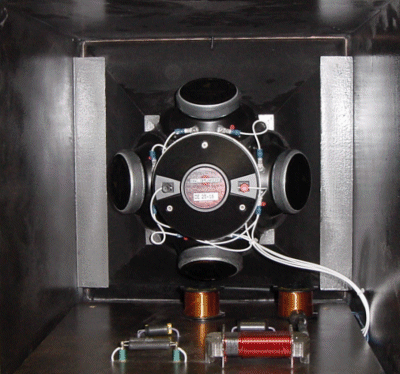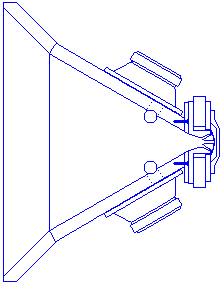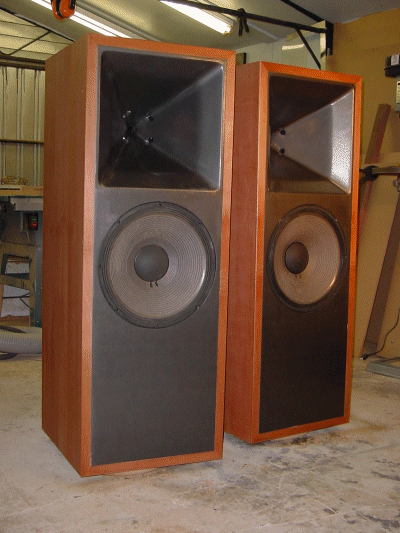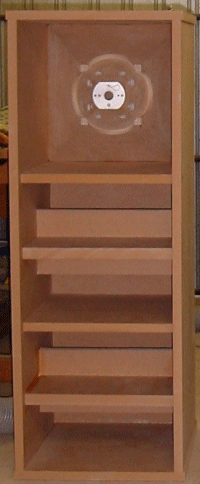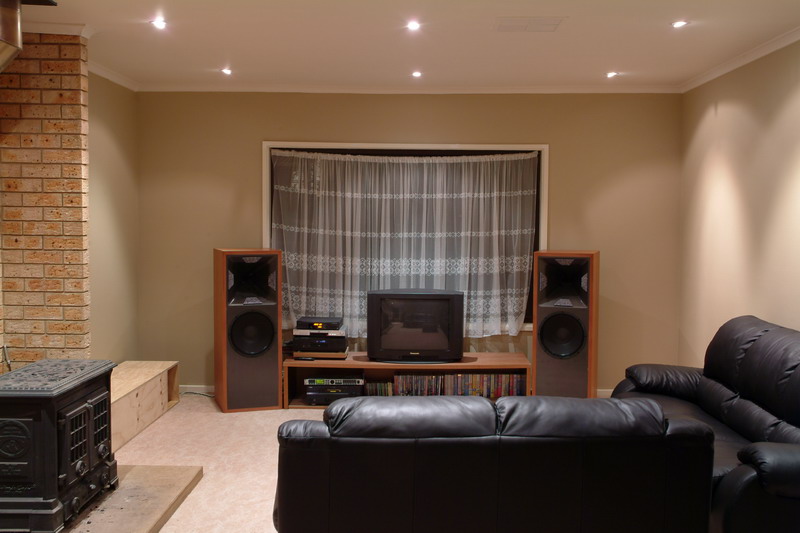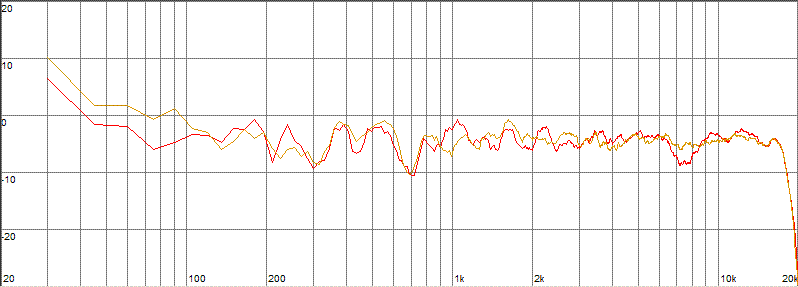The Unity horn is the brainchild of Thomas Danley, who also invented the Servodrive subwoofer. It is a multi driver horn, which combines the output from five drivers into a single constant directivity horn. The picture on the right shows how the drivers are arranged on the back of the horn. You can see the four midrange drivers and the compression driver in the middle. My horns use the B&C DE-25/16 compression driver. Sadly Lambda Acoustics went out of business a few years ago. The Unity horns are no longer available to the DIY market.
This horn offers many of the advantages of my old ribbon speakers, (low distortion, low thermal compression and well controlled vertical directivity) but adds a few as well (high efficiency and well controlled horizontal directivity). The efficiency of this horn is very high, at around 100dB/W/M. To keep up with this extreme output, I drive the 15LW1401 with around 400W RMS for each channel for the bass. This gives me over 120dB of maximum output capability at 1 meter, including thermal compression. (which is 2.3 dB @ 350W and 3.4dB @ 700W for this driver) The sub is driven with an Australian Monitor AM1600, one driver per channel.
The bass and mid/high amplifiers are Australian Monitor 1K2s.
